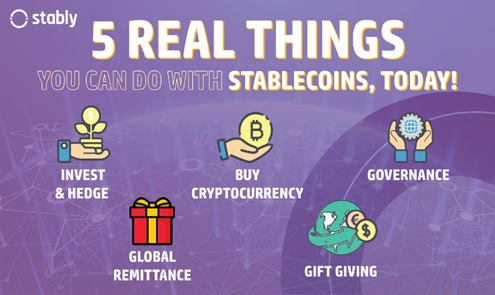Advancement of financial technology and digitalization of currency over the past few decades gained lot of importance in the financial system, when we say digitalization of currency or digital currency, it is certainly cryptocurrency which comes to our mind. Cryptocurrencies plays a vital role in the future financial system. Though Bitcoins are the most popular cryptocurrency, because of its high short-term volatility and risk in the market valuation makes it unsuitable for everyday use by the investors or public. Recently, along with Bitcoin there is another cryptocurrency which is in circulation i.e., Stablecoins. Stablecoins are also a type of cryptocurrency like Bitcoins and Ether, but its market value is attached to some external references, usually Government backed securities, bonds or gold which makes them stable.

“Digital currencies like Bitcoin and Ethereum are tremendously volatile”, which makes pricing things in their terms very difficult, says Anthony Citrano, founder of Acquicent, a marketplace for NFTs. While Bitcoins and Ether with high volatility interrupted many investors way of thinking about usage of digital currency and scare them to opt for it. Stablecoins avoid this issue by locking their prices to a known reserve currency. Stablecoins acts as a solution to overcome the drawbacks of Bitcoins high volatility as they are more stable with collateralization through commercial papers, precious metals like gold, silver and commodities like oil, bonds, real estate and currency reserves. Such currency reserves are preserved by custodians and are regulated for required compliance. These collateralized Stablecoins are more decentralized than their peers (Bitcoins and Ethereum) and are backed by cryptocurrencies.
The advantages of Stablecoins includes low – cost, stability in the value and safety compared to Bitcoins and Ethereum. With the appropriately regulated legal framework Stablecoins will definitely benefit the consumers and businesses to accept payments and to the government to connect with the unbanked segments of the population to the financial system. With the advantages, Stablecoins might also pose financial concerns and risk to financial integrity, including compliance with rules governing anti-money laundering (AML) and countering the financing of terrorism (CFT) and proliferation.
Stablecoins have the potential to play a significant role in the future of global finance and could even become a backbone for digital payments and financial services. Moving forward, it is essential for regulatory authorities to build appropriate regulatory and supervisory frameworks such as the tools, skills and technology to identify the evolution or creation of Stablecoins, in particular global Stablecoins.
Prof. Ramya H P,
Assistant Professor,
DSCE- MBA
